Dumfries House – Keeping people, places and planet in harmony with nature
By Lorna Dawson, Head of Forensic Science
On the 24th September 2024 I was privileged to be invited as part of the Scotia Agricultural group to be shown around the Agricultural education and training centre based at Dumfries House. Scotia bring together people with experience of interdisciplinary approaches to food production who seek a balanced judgement of the long-term effects of innovation on the conservation of the land in Scotland.
We were welcomed to the estate by Alex Reynolds, the farm curriculum manager for Dunfries House and lead tutor on many of the Kings Foundation courses. HRH King Charles is patron of the Kings Foundation that funds the great initiative. Alex told us about the centre and how it was essentially driven by nature following a cycle from learning, practice, teaching and back to learning, delivering harmony in the process. Other centres in the Kings Foundation are Highgrove and Castle of Mey. In the teaching the educators embed the key principles that address some of the most relevant and pressing challenges facing the world we live in today. Producing nutritious food, animal welfare, climate and nature benefits, community and rural resilience.
Topics taught at Dumfries House and the farm estate include fashion and fabrics, the built environment, hospitality, health and wellbeing, modern architecture, as well as the important farm operation skills and sustainable regenerative practice as well as furniture making. All these skills and taught with a deep respect for skills of the past and with a view to building a sustainable and resilient future.
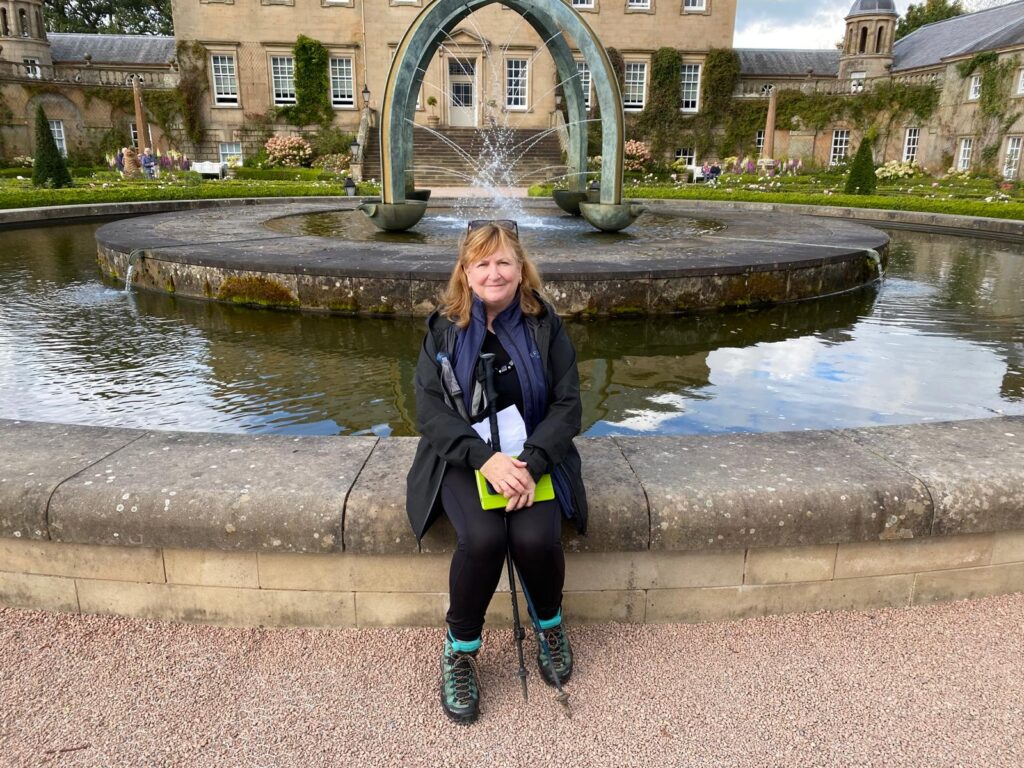
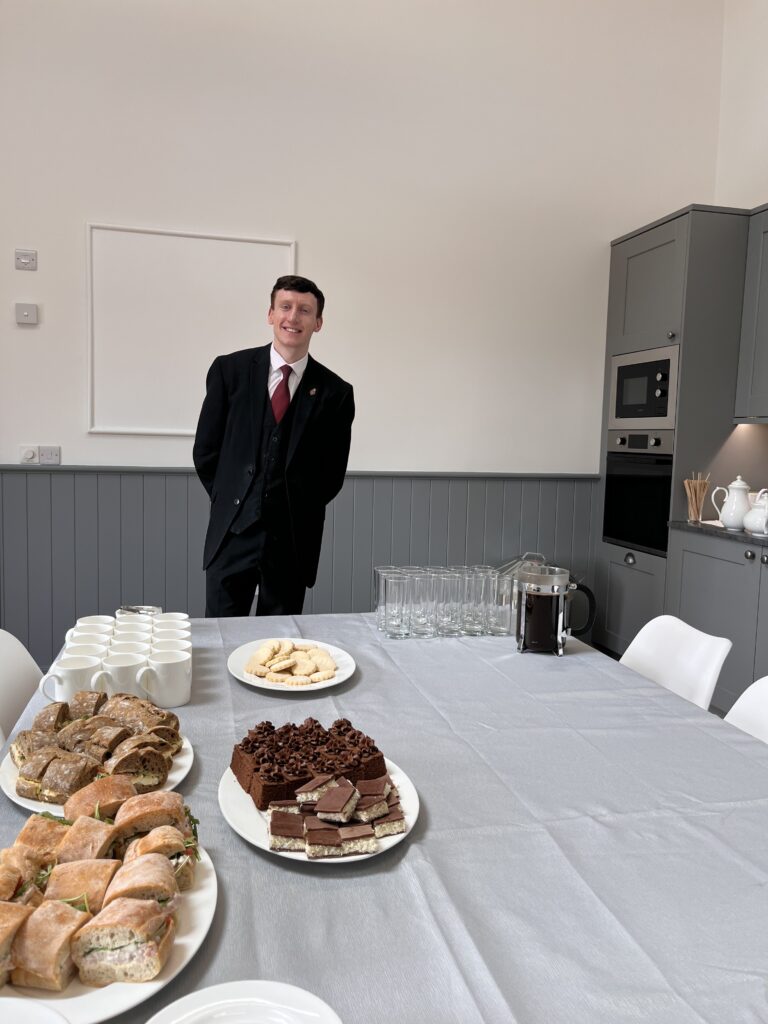
On the model farm we were shown some of the rare breeds living there and how sustainable practices are used. There are good relationships with neighbouring farmers with sharing experience and expertise, all to help promote good sustainable practices. They are also embracing modern technology with for example the adoption of the use of animal tags, computer-based machinery, etc.
The work they carry out complements the school curriculum and can lead to qualifications such as City and Guilds in subjects such as hospitality, food and hygiene and heritage crafts. Subjects taught link to the school curriculum to enable visiting pupils to enable complementarity with the formal curriculum subjects such as geography, biology and modern studies.
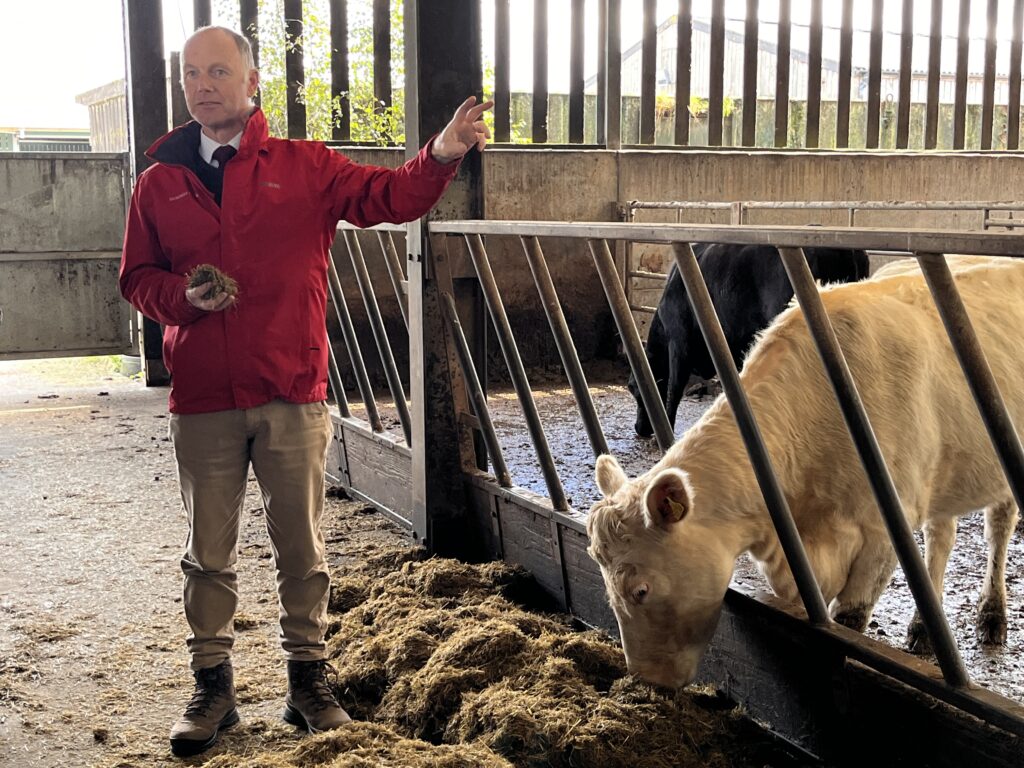
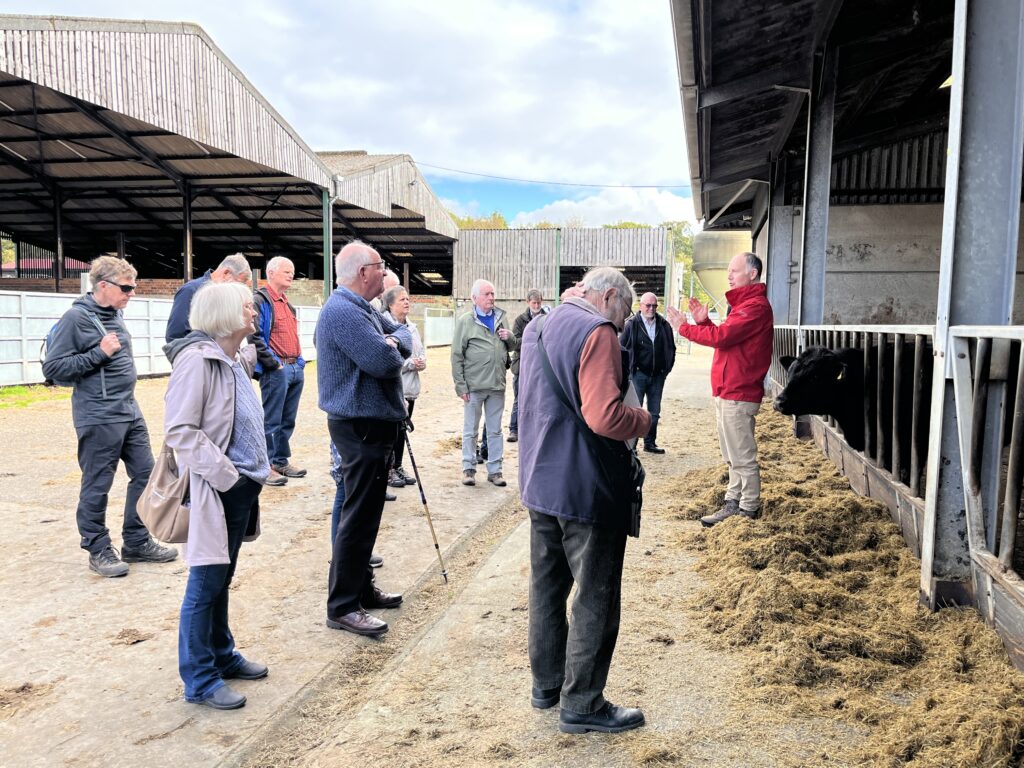
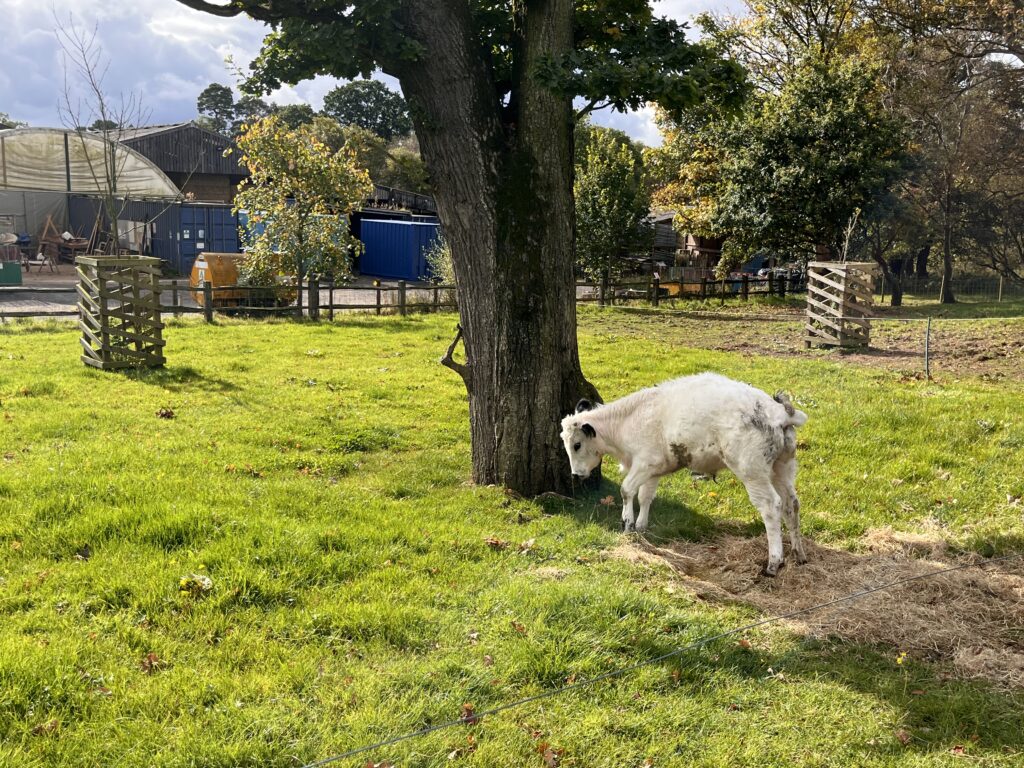
Alex Reynolds showed us some of his breeding stock of beef cattle and some of the rare breeds both in the shed and also outside.
We were also introduced to the Whitebred Shorthorn, previously known as the Cumberland White. It is known traditionally for crossing the Whitebread Bull with the Galloway Cow to produce the blue-grey breed. They are hardy, medium in size with bright bold eyes. The Beef Shorthorn was developed as a hardy dual-purpose breed, for both dairy and meat. However, later in the late 20th century, they were split into two separate breed lines, for dairy and beef as separate lines. Alex said that they were a generally quiet, maternal, gentle natured breed producing really excellent quality nutritious meat.
The Tamworth pigs originate from Ireland were known as the ‘Irish grazers’. Sir Robert Peel imported some in 1812 to the estate at Tamworth where they were given their name. They are a hardy breed and can be kept outdoors. They are a cute ginger colour with long legs and a quiet temperament. Litters can be 6 to 10 piglets. They apparently produce excellent pork and bacon.
Building rural skills in our countryside is so important. Farm skills such as learning the importance of good animal breeding and excellent animal care and husbandry (eg with cows, pigs, geese, hens) as well as mastering the skills in milking, shed building, hedge maintenance, dyke building and fence making, using both traditional and modern techniques is so important.
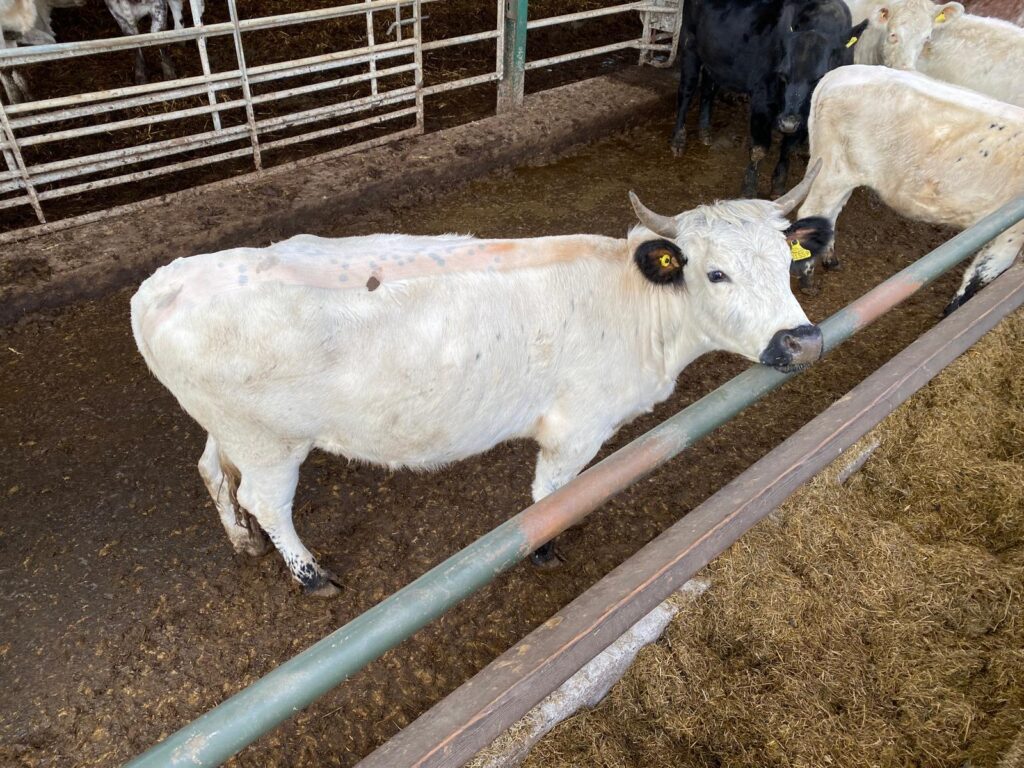
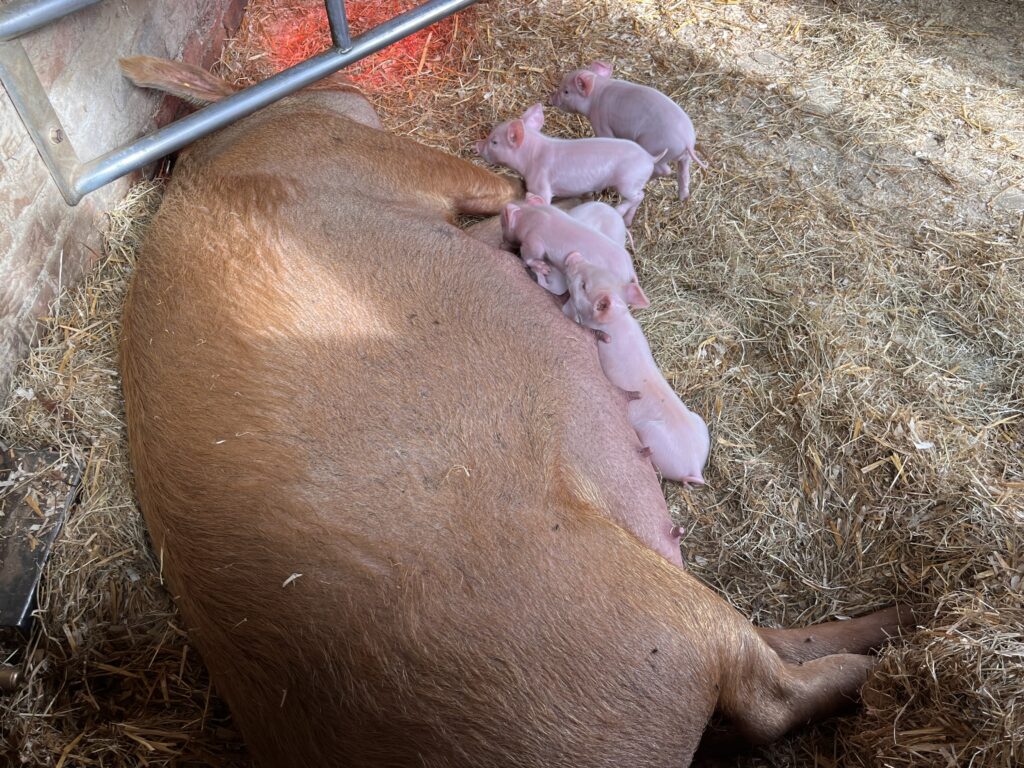
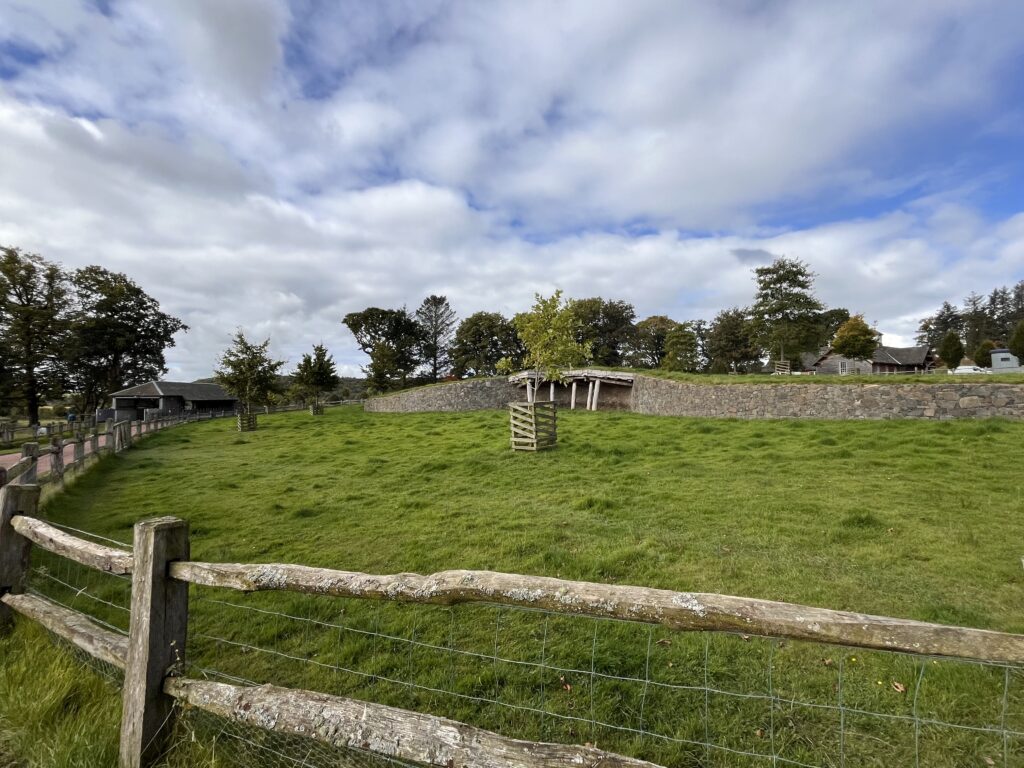
We were then introduced to the Scots Dumpy hen, which is one I remember looking after at home on the farm when I was a young girl. Interesting that the Scots Dumpy hen is of pure Scottish extraction. They were even thought to have been bred in Scotland in Saxon times (around 1000 years ago). The are black (or some are a colour similar to a cuckoo) and always with a bright red comb and red earlobes.
The Scotia group had a really informative day with lots of important information delivered. Food for thought. It won’t be long before some of us return. Thank you to all at Dumfries House farm for making us all feel so welcome.
As we left Alex said:
‘We are using Nature as a lens to create rounded people for the future.”
Certainly, on our visit to the Dumfries House farm in August we could see, touch and taste the proof of that ethos of people and place being in harmony with nature. It seemed so natural.
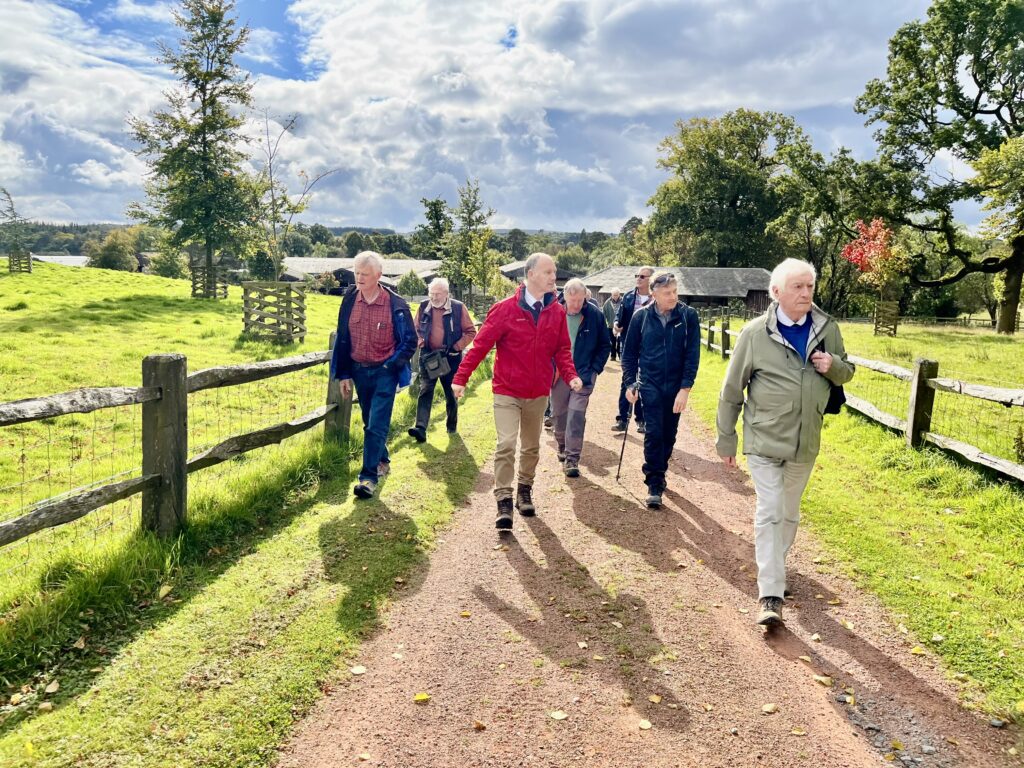
Lorna Dawson, KE Lead for Environment, SEFARI Gateway and Principal Soil Scientist, James Hutton Institute.
Disclaimer: The views expressed in this blog post are the views of the author, and not an official position of the institute or funder.
